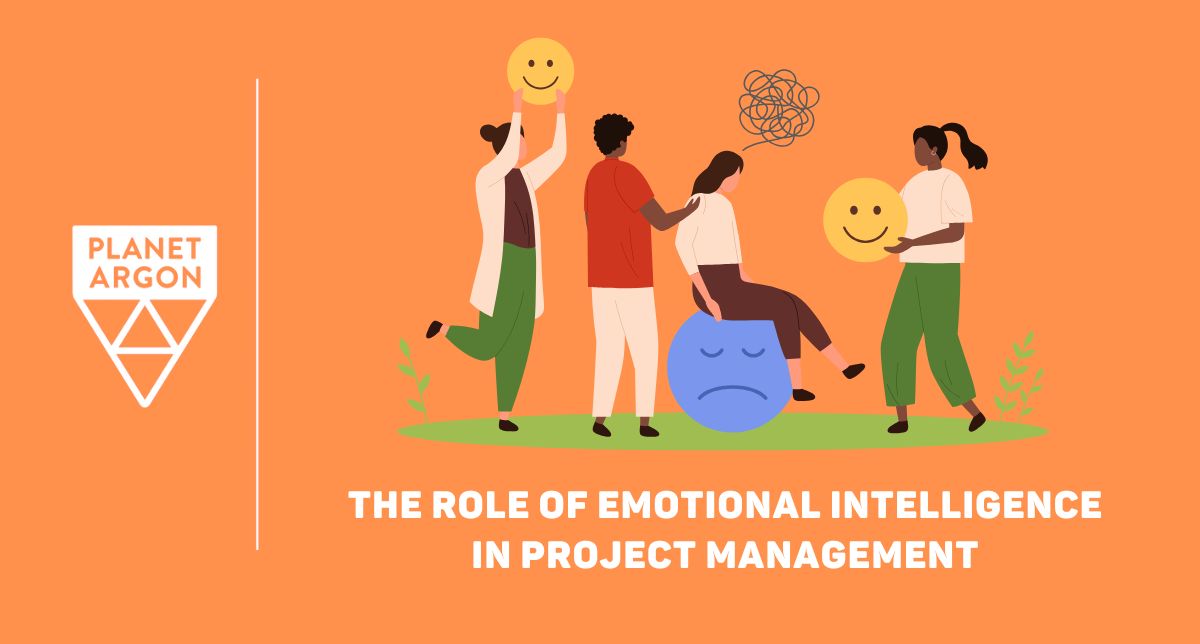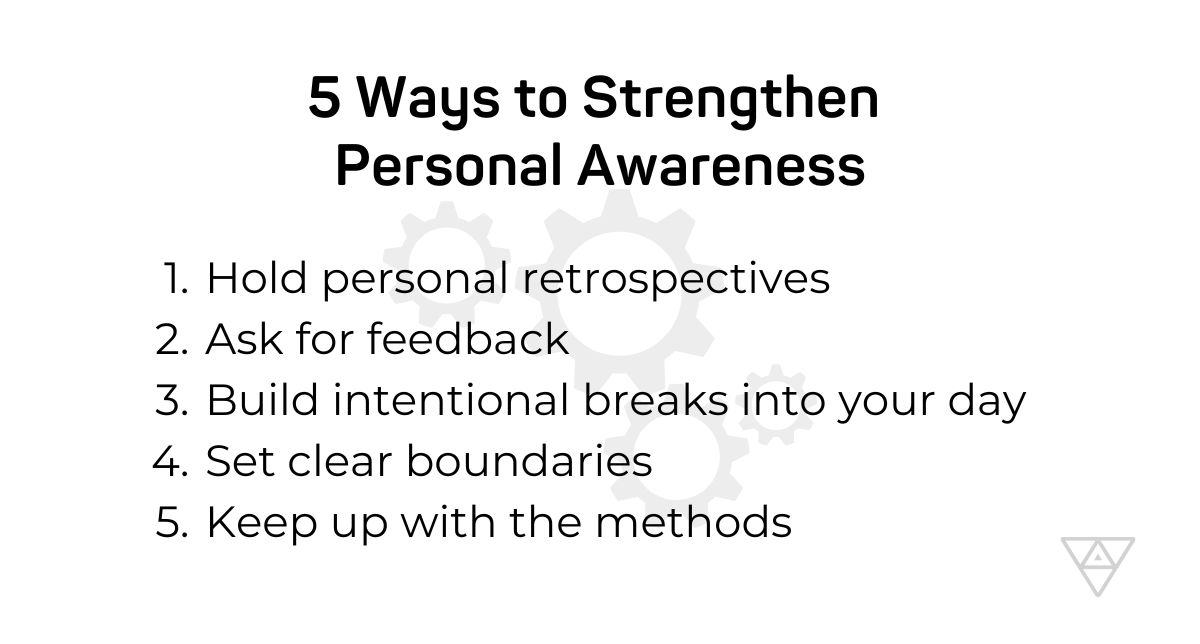
Project management can be overwhelming at times. There’s a lot to do, like administrative tasks, managing expectations around budgets and timelines, and leading multiple big meetings in one day. But, perhaps more importantly, in the middle of all these practical skills is another we might not think a lot about- emotional intelligence.
You can learn how to create a budget sheet. Meeting agendas can be automated. Tickets can even create themselves sometimes. However, a more challenging aspect of being a project manager on a team of software developers is the ability to understand, empathize, and lead with a deep well of curiosity about a project.
When we look at client management and interactions, emotional intelligence is the primary driver of what makes good relationships. It builds an environment that supports collaboration between people on a team. When something goes wrong on a project, or if you have to pivot quickly to an emergency, the strong bonds between people help to control a situation with honesty, curiosity, and a willingness to say no to things you disagree with.
For yourself, as a project manager, it is also vital to understand where you’re coming from emotionally. Being frustrated with the progress of a project is one thing, but a good team member and manager of that project has to know *why they are frustrated with progress. *There has to be some personal and empathetic awareness of what is happening holistically on a project to get to progressive change.
What is emotional intelligence?
Emotional intelligence is a blanket term for several personal aspects, including self-awareness, empathy, motivation, and understanding complex social situations. In short, it is the ability to “read the room” on many levels of insight. Practically, what does this mean?
Here is a real scenario: Our client was frustrated with how we were delivering warnings about their application’s software version being out of security support. A new version of Rails had just been released, pushing them into the “unsupported” version. This happens often, but it can be frustrating for clients trying to maintain their business and keep everything working.
Without empathy, we could have just said: “Sorry, it’s just how this business is.” But that wouldn’t help! The client would be frustrated and push that frustration back onto the software developers and maybe even how they felt about Ruby on Rails as an entity.
By using emotional intelligence, we can step back and ask ourselves a few questions:
- What would it be like to receive this news suddenly when you thought everything was running smoothly?
- How would it feel to add this potentially costly upgrade to an already extensive list of things that need to be done?
- As the domain experts, have we done anything to prepare the client for receiving this news?
- Is there real urgency to this task, or can we build a larger discussion about it into the schedule?
Stepping back, evaluating all the factors, and approaching a situation like the example outlines can save a client relationship (and a lot of time!). The upgrade in this example is important, but it’s not urgent today. Let’s discuss it with the client and help them understand the benefits, safety, and reliability of the project as a whole. This way, we can build up the client’s knowledge on the subject, understand their budget and schedule, and create buy-in for the project going forward.
5 Ways to Strengthen Personal Awareness
1. Hold personal retrospectives
Agile retrospectives are a tool that helps teams discuss projects honestly and improve the working process. No one says you can’t do that for yourself! Use those skills to improve your own process and understanding after a tough project.
2. Ask for Feedback
One of the mistakes mid-level project managers often make is that they silo themselves into an issue. There is a good chance that other managers on your team, or even technical leads, have encountered a similar problem before! Don’t be scared to ask.
3. Build intentional breaks into your day
Because project management requires a lot of context knowledge and context switching, there can often be a heavy burden to keep up with everything all at once mentally. Build intentional breaks into your schedule, and put them on the calendar. You can also go for a walk in the middle of the day between meetings.
4. Set clear boundaries
Understand that work will not stop when you need it to. There will always be more to do the next day and week. So when someone asks: “Can you do this?” be sure to look at your schedule and let them know when you next have time to take on that task. This will set an expectation for the other person but also help highlight how urgent something is for them.
5. Keep up with the methods
Again and again, it is helpful to learn about project management tools and methods and read case studies from other project managers. It’s very easy to get stuck in the grind and flow of many different projects, pushing you back into old patterns or habits. But you have to stay curious. Attend workshops, reach out to peers when you have an issue, and pick up new books.

Embodying “No” in Challenging Situations
One of the perks of being a more senior project manager is that you know when to say “no” to a request. You’ve earned the trust of the clients, your team members, and the company to push back on something you know is incorrect. Not all work meets expectations. Not all requests are created equal. Part of being an emotionally intelligent project manager is being aware of your gut feelings. Your experience, feeling, and vision of the project’s big picture will allow you to lead with assertiveness and empathy. People will appreciate it!
“No” is a strong word. So be prepared to express why you’re saying “no” to something.
Here’s an example:
We were working on a feature recently that was too loosely defined. The requirements weren’t as straightforward as they needed to be, the technical plan was scatter-shot, and the general knowledge of the application was not where it should be for the team to do their best work. The client for this feature asked: “Do you think we can have this done by next week?”
At first glance, we’d want to say, “Yeah, we can push for that!” But under the surface, would we be stressed about the work getting done at the correct standard or delivering on time with such little information to go on?
If we step back and are honest with our gut feeling, we can tell the client, “No, but…” This “but” is that we need to talk further about the requirements. As a collaboration between client and developer, we need to drill down to the why of a task so that the team can make a better technical plan.** It’s okay to say that you don’t know enough yet.**
Staying in the Loop when Attention is at Peak Utilization
Awareness is your greatest asset. Attention to context, the small details, and the underlying feelings behind a request will help you prioritize work on a project more confidently. Not all requests are equal. Some are labeled low priority, but they are really annoying for some key stakeholders. A task may seem urgent to you, but in the larger schema of responsibilities, it won’t benefit the company or your job very much.
But awareness is the first thing to go when things get busy… or stressful… So how do you keep up?
This feeling of losing footing is very common when big issues arise and steal our attention as project managers. It’s a natural reaction to an urgent situation - the little things get pushed down, internal meetings get canceled, and the focus moves entirely to the biggest fire. But eventually, that fire goes out, and things stabilize, and you will need to pick up everything you put down.
To help, remember these basic principles:
- Use the tools you have: Project management software, like Jira or Asana, is very good at quickly collecting tasks and placeholders. When diving deeply into an urgent thing, something minor and unrelated will often occur to you. Write it down! Put it on a checklist and then move back to the urgent issue. You’ll thank yourself later.
- Escalate issues: Ask for help. Bring in valuable team members to take over smaller tasks that are weighing on your mind so that you can be focused on the fire at hand.
- Know when to stop: Chances are, if the fire is big enough, there will be enormous pressure to dedicate 100% of your focus to that fire until it is resolved. But that might be an entire day… or longer until the issue is resolved. Despite common practice, you will stop being efficient at some point throughout the day. When this happens, be sure to communicate to the team that you are going to take a break or go home for the day and return to the issue with a clearer head.
- Be honest with yourself: Are you needed for this issue? Or would this fire be better put out by a skilled developer on your team? Is this something you are trying to protect from management, the client, or other team members?
Reflection Time
Emotional intelligence takes time to develop. It can be scary to be honest at work! But if you want to grow, build trust with clients and team members, and feel good as a project manager, the first step is to invest in your own awareness. The quicker you recognize these aspects of projects, the easier it is to avoid stressful situations or personal burnout.
When you start working in project management, you try your best to learn everything: the tools, people, and projects. However, as you graduate to higher levels in the position, it really comes down to emotional intelligence and experience. So start now! Reflect on what bothers you. Escalate things that are difficult to understand. Work through challenging situations with the team. Be transparent about your boundaries and the limits of your time. Your team and your boss will thank you, and you’ll feel better about the projects you’re working on.
Tags: